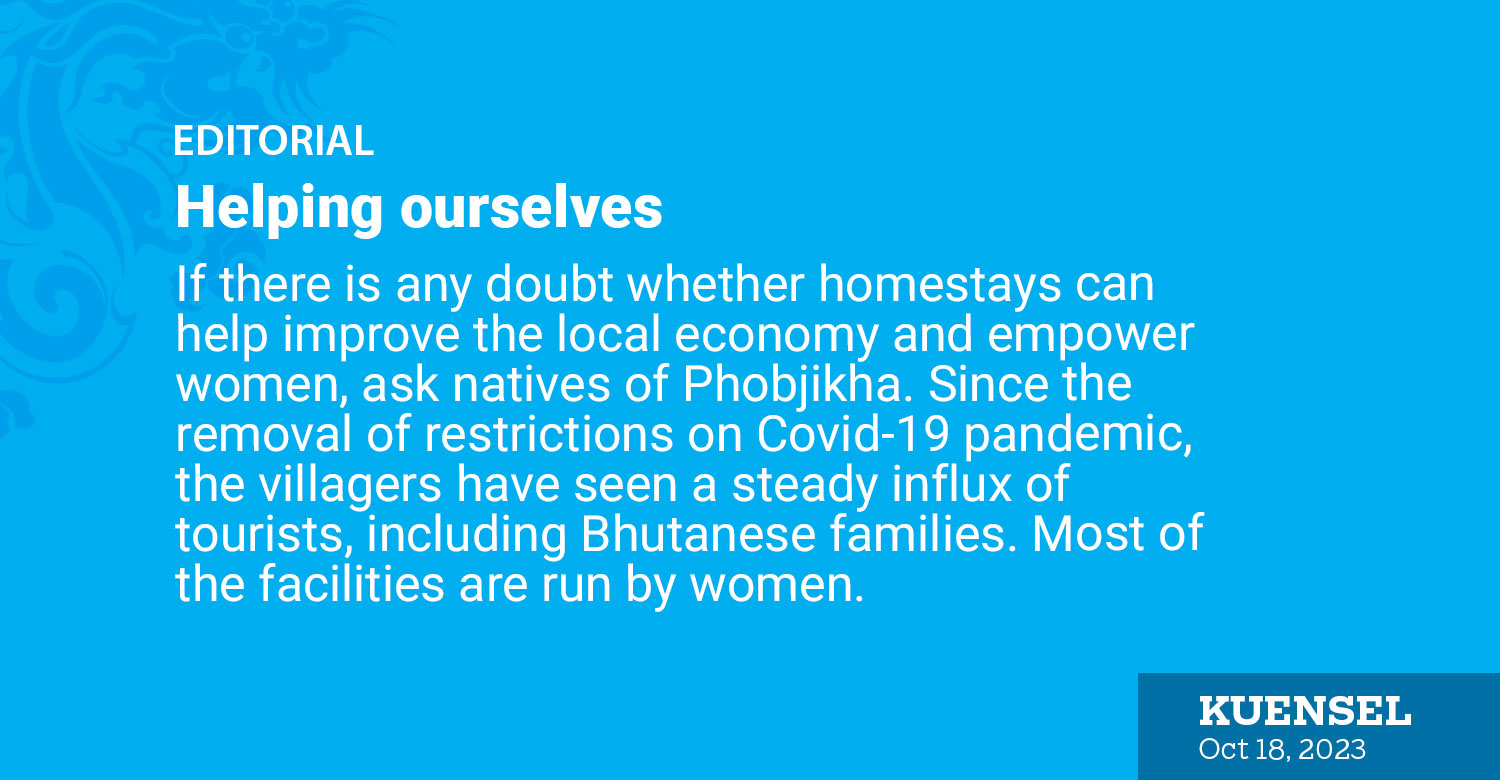If there is any doubt whether homestays can help improve the local economy and empower women, ask natives of Phobjikha. Since the removal of restrictions on Covid-19 pandemic, the villagers have seen a steady influx of tourists, including Bhutanese families. Most of the facilities are run by women.
However, it is a different story with the homestay facilities in our eastern dzongkhags.
Homestays in Trashiyangtse, home to our national butterfly, the Black-Necked Cranes, traditional paper-making and wooden bowls, and numerous holy sites are still waiting for visitors a year after they were certified to cater to commercial guests.
The hospitality and tourism sector offers great opportunities for strengthening Bhutan’s local economy, creating jobs and improving infrastructure while conserving the fragile ecosystems. There is no denying that besides the economic and environmental consideration, there is also a ‘people to people connectivity’ element. Our folks in the villages are by nature excellent and generous hosts.
Our experience with the festival in Laya and Jigmechu in Chukha indicate that it is possible. With consistent support from relevant authorities and a strong sense of ownership from the communities, the Royal Higlander Festival in Laya and Jigmechu Ecotourism site have become much sought after destinations with the locals and foreign visitors alike.
We are witnessing an increasing number of Bhutanese travelling abroad on pilgrimage which in the long run could create a dent on our foreign reserves. Going by this trend, mega pilgrimage events or tours organised by the respective dzongkhags during the sacred first and fourth months on the Lunar calendar could drive devotees in large numbers to places like Lhuentse, Trashiyangtse, Bumthang, and Trongsa which are rich in holy sites. We also have many exciting local festivals in many communities across the country.
Similarly, the hospitality industry in the dzongkhags, and the administration can chart out plans and programmes to cater to this segment of visitors. For instance, hosting mega religious events, sporting events and trade expo, among others in Samdrupjongkhar, Gyalpoizhing or Nganglam from Autumn through to late Spring could attract a large number of visitors.
Programmes to spread tourism beyond the regular popular sites have been underway like the TransBhutan Trail and certifying homestays in the dzongkhags. These will, however, not push visitors to the dzongkhags if authorities and communities don’t build up the pull factors.
Of course, we need consistency with regular domestic flights. Improving the roads and facilities along the highways can go a long way in boosting visitors. But a bigger responsibility lies with the communities and local governments.
For instance, for a long time, bird festivals, mushroom festivals, and similar events organised in the regions to attract visitors struggled for lack of community ownership. After a certain period even agencies supporting these festivals felt the events were only draining government funds without real tangible results in the communities.
In coming up with ideas to promote tourism in the so far less popular tourist destinations, the local government leaders will have to bear a huge responsibility and be at the forefront of driving this change and in encouraging the communities to take ownership of the initiatives.
Tourists want to get the true Bhutanese experience which is in our communities beyond the towns in our villages.


